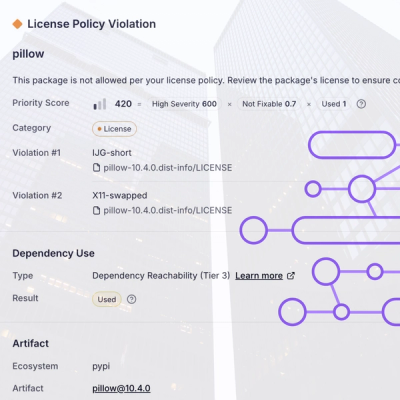
Security News
TC39 Advances 11 Proposals for Math Precision, Binary APIs, and More
TC39 advances 11 JavaScript proposals, with two moving to Stage 4, bringing better math, binary APIs, and more features one step closer to the ECMAScript spec.
reactjs-calendar-heatmap
Advanced tools
This d3.js heatmap representing time series data is used to visualize tracked time over the past year, showing details for each of the days on demand.
Includes a global overview of multiple years and visualizations of year, month, week and day overview with zoom for details-on-demand.
Inspired by Github's contribution graph
Based on Calendar View by Mike Bostock
Aaand D3.js Calendar Heatmap by Darragh Kirwan
Click here for a live demo.
npm install reactjs-calendar-heatmap
CalendarHeatmap in your componentimport CalendarHeatmap from 'reactjs-calendar-heatmap'
CalendarHeatmap component<CalendarHeatmap
data={data}
color={color}
overview={overview}
handler={print}>
</CalendarHeatmap>
| Property | Usage | Default | Required |
|---|---|---|---|
| data | Time series data from max a year back | none | yes |
| color | Theme hex color | #45ff00 | no |
| overview | Initial overview type (choices are: year, month, day) | year | no |
| handler | Handler function is fired on click of a time entry in daily overview | none | no |
Time series data where each day has a total time tracked (in seconds).
Details, if provided, are shown in a tooltip on mouseover in different overviews.
var data = [{
"date": "2016-01-01",
"total": 17164,
"details": [{
"name": "Project 1",
"date": "2016-01-01 12:30:45",
"value": 9192
}, {
"name": "Project 2",
"date": "2016-01-01 13:37:00",
"value": 6753
},
.....
{
"name": "Project N",
"date": "2016-01-01 17:52:41",
"value": 1219
}]
}]
In some cases details array could be large and in order to fit the data into the tooltip a short summary is generated with distinct projects and their total tracked time for that date. In terms of optimization, summary data can be computed server-side and passed in using the ``summary'' attribute. And in addition to the data structure described above this would result in a summary dictionary with distinct project names and total values of tracked time in seconds, e.g.:
var data = [{
"date": "2016-01-01",
"total": 17164,
"details": [.....],
"summary": [{
"name": "Project 1",
"value": 9192
}, {
"name": "Project 2",
"value": 6753
},
.....
{
"name": "Project N",
"value": 1219
}]
}]
See index.html for an example implementation with random data or click here for a live demo.
If you are looking for a plain vanilla javascript version of the heatmap, check out calendar-heatmap-graph
If you want to use this heatmap as an AngularJS directive (version 1.x), see angular-calendar-heatmap
Or as an Angular component (version 2.x), see angular2-calendar-heatmap
FAQs
React component for d3.js calendar heatmap graph.
We found that reactjs-calendar-heatmap demonstrated a not healthy version release cadence and project activity because the last version was released a year ago. It has 1 open source maintainer collaborating on the project.
Did you know?

Socket for GitHub automatically highlights issues in each pull request and monitors the health of all your open source dependencies. Discover the contents of your packages and block harmful activity before you install or update your dependencies.

Security News
TC39 advances 11 JavaScript proposals, with two moving to Stage 4, bringing better math, binary APIs, and more features one step closer to the ECMAScript spec.

Research
/Security News
A flawed sandbox in @nestjs/devtools-integration lets attackers run code on your machine via CSRF, leading to full Remote Code Execution (RCE).

Product
Customize license detection with Socket’s new license overlays: gain control, reduce noise, and handle edge cases with precision.